The War Against the
Jews
19331945
Lucy S. Dawidowicz

IN MEMORY OF
TOBA (TOBTSHE) DAWIDOWICZ
WARSAW 1924WARSAW GHETTO 1943
AND
ZAREK DAWIDOWICZ
WARSAW 1927TREBLINKA 1942 (?)
TWO OF SIX MILLION
Contents
.
T his book had its genesis in a course I developed at the suggestion of Rabbi David Mirsky, Dean of Stern College for Women, Yeshiva University. I am grateful to Dean Mirsky for facilitating this undertaking and for his confidence in its successful completion.
The immense scope of the subject required assistance in research and translation. I am grateful to the following foundations whose grants during the last five years enabled me to obtain that assistance: Atran Foundation, Inc., and its vice-president, Mr. Isaiah M. Minkoff; The Gustav Wurzweiler Foundation, Inc., and its president, Dr. Max Gruenewald; the John Slawson Fund for Research, Training and Education and Dr. John Slawson; The Lucius N. Littauer Foundation and its president, Mr. Harry Starr; the Memorial Foundation for Jewish Culture and its assistant executive director, Dr. Jerry Hochbaum.
I am indebted to Miss Dina Abramowicz, librarian of the YIVO Institute for Jewish Research, and to Mr. Harry J. Alderman, head of the Blaustein Library of the American Jewish Committee, for their unstinting helpfulness and expert advice. Mr. Ezekiel Lifschutz, archivist of the YIVO Institute for Jewish Research, now retired, was courteous and accommodating. Mr. Samuel L. Haber, executive vice-chairman of the American Jewish Joint Distribution, kindly gave me permission to use that institutions archives and Mrs. Rose Klepfisz, JDCs archivist, cheerfully and knowledgeably guided me through these massive records. Mr. Milton Himmelfarb, director of the Information and Research Service of the American Jewish Committee, gave me permission to use the AJCs Records Center, and Mrs. Ruth Rauch, in charge of those records, gave me every assistance. Dr. Fred Grubel, secretary of the Leo Baeck Institute, was unfailingly helpful by giving me access to the Institutes unpublished collections and by sharing his wide store of knowledge in response to my many questions. Mr. Hillel Kempinski, in charge of the Franz Kursky Archives of the Jewish Labor Bund, and Mrs. Sylvia Landress, head of the Zionist Library and Archives, were generous in helping me locate various unpublished materials in their collections.
Dr. Hildegard von Kotze, archivist at the Institut fr Zeitgeschichte in Munich, was most helpful in answering my inquiries and in providing me with copies of documents not available elsewhere. Mr. Robert Wolfe, specialist for modern European history, and Mr. John E. Taylor, assistant director of the modern military branch, both of the National Archives, were helpful in locating and providing me with copies of unpublished German documents which I requested. Mrs. H. Czarnocka, honorary secretary of the Studium Polski Podziemnej in London, helped to trace documents of interest to me. I am indebted also for valuable data to Mr. M. Mazor, director of the archives of the Centre de Documentation Juive Contemporaine in Paris; to Dr. Eloisa Ravenna, secretary of the Centro di Documentazione Ebraica Contemporanea in Milan; and to Mme. Luci Petrovi , secretary of the Federation of Jewish Communities in Yugoslavia in Belgrade.
, secretary of the Federation of Jewish Communities in Yugoslavia in Belgrade.
Dr. Isaiah Trunk and Dr. Lucjan Dobroszycki, both at the YIVO Institute, gave generously of their time and their vast fund of knowledge. Dr. Friedrich Brodnitz, Mrs. Chana Fryszdorf, Mr. Milton Himmelfarb, Dr. Ismar Schorsch, and Dr. Trunk read portions of the manuscript and I benefited from their corrections and advice. For intellectual stimulation of a high order I thank Dr. Mortimer Ostow and the members of the ongoing Seminar on Jewish Response to Crisis, which he has conducted under the auspices of the Jewish Theological Seminary of America. My friend Rose Grundstein has encouraged me by her enthusiasm and dedication.
Above all, I owe this book to my husband Szymon, who gave me the courage to begin the work and the strength to complete it.
L.S.D.
I n the ten years since this book first appeared, a vast number of books and articles about the murder of the European Jews have been published. Nevertheless, this book continues to be favorably received by English readers throughout the world and has been published in French, German, Hebrew, and Japanese as well. For this new edition I have supplemented the original list of sources with a bibliography culled from the publications of the past decade and I have corrected typographical errors. Apart from this, I have chosen not to alter anything that I wrote.
In the intervening years little new documentation has been unearthed from the rubble of National Socialist Germany. In 1983 the whole world was electrified by the news that sixty volumes purporting to be Hitlers handwritten secret diaries had been discovered. Some very eminent historians vouched for their genuineness, while other equally eminent historians disputed and ridiculed that claim. It didnt take long before the diaries were proved to be a clumsy forgery.
The new evidence that has come to light since my book first appeared provided some interesting items of documentation, but none can be described as significant finds in terms of changing our views of the National Socialist past. Indeed, this additional evidence has further strengthened and corroborated my account of the war that the German dictatorship under Adolf Hitler waged against the European Jews.
When I wrote The War Against the Jews 19331945, I undertook to do three things. First, I wanted to present a coherent account of how it came about that National Socialist Germany succeeded in murdering six million European Jews. This is Part I: The Final Solution. Next, I wished to show how the Jews, first in Germany proper and then in Eastern Europein Poland and Lithuania particularlyresponded to the assault that was directed first against their rights, then against their livelihoods, and finally against their lives. This is Part II: The Holocaust. Finally, I provided the appendices, The Fate of the Jews in Hitlers Europe and The Final Solution in Figures, to give the reader a concise factual overview, country by country, of the murder of the European Jews.
To lay the foundation for the historical account in the first part of the book, I began where this story must beginwith Hitler and with the irrational views of the Jews which shaped his mental universe. I tracked the development of Hitlers ideology from the start of his political career, examining his utterances on Jews as expressed in his speeches, articles, and books, until his final political testament, which he dictated just before his suicide.
Next, in an attempt to explain how this uneducated fanatic emerged out of the German political landscape to become the Fhrer of the German nation, I offered a capsule history of German nationalism and of the racist anti-Semitism that first intruded into Germanys politics in the 1870s and soon became its most enduring staple. In time, the German people became habituated to the uninterrupted presence of anti-Semitism and came to accept it as a familiar element of their political discourse.
The conventional anti-Semitism of those days, as it appeared in the planks of several political parties, advocated stripping the Jews of their newly gained political rights, barring them from public office, forbidding them to teach in Germanys schools and universities, excluding them from participation in the countrys cultural and intellectual life, and restricting further Jewish migration into Germany. But Hitler from his earliest days preached a new and radical form of anti-Semitism, in ambiguous and esoteric language calling for the removal or elimination of the Jews. To those who were not among the early insiders of the National Socialist party, his anti-Semitic goals sounded unexceptional, indistinguishable from the conventional anti-Semitism to which most of them subscribed.
Next page
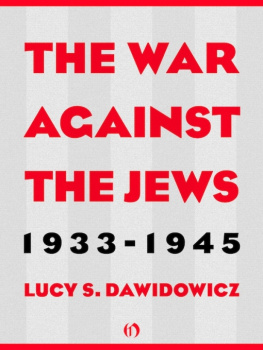
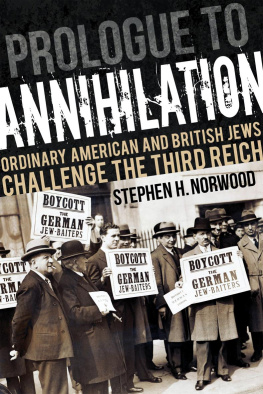

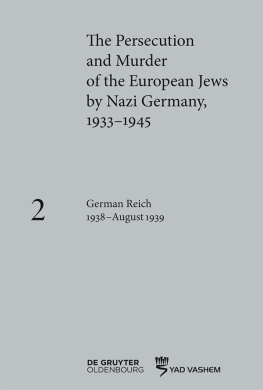
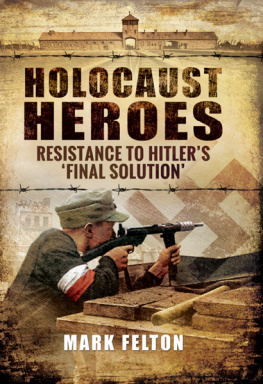
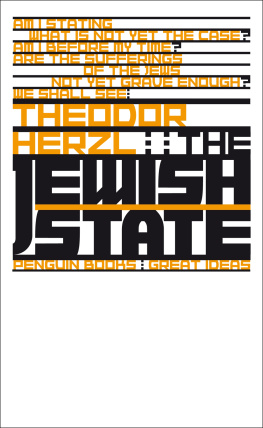
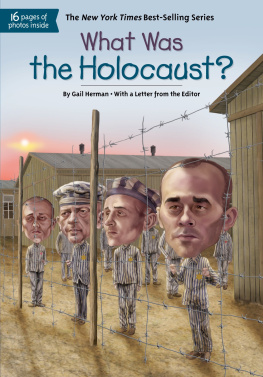

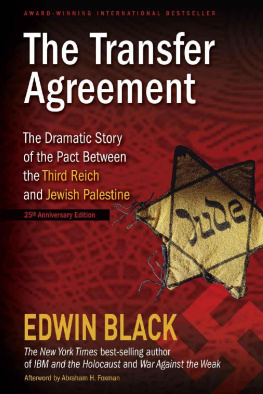
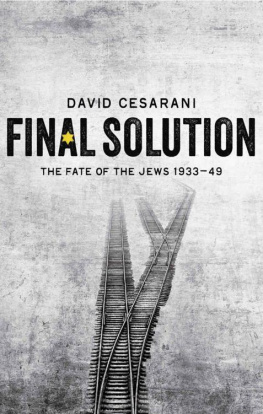


 , secretary of the Federation of Jewish Communities in Yugoslavia in Belgrade.
, secretary of the Federation of Jewish Communities in Yugoslavia in Belgrade.